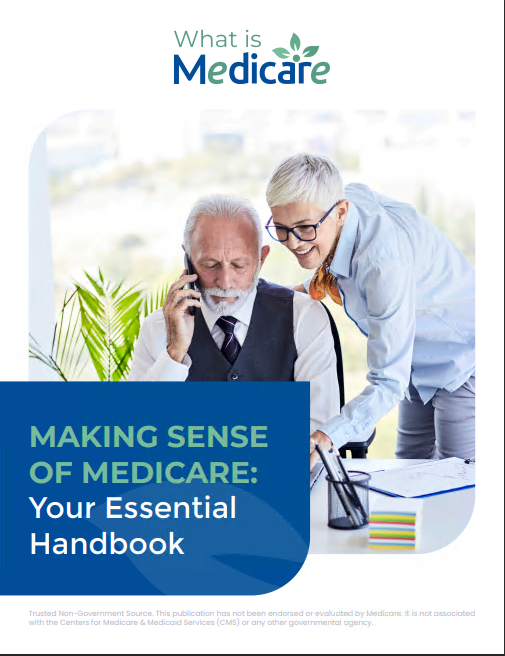Key Takeaways
-
Some Medicare Advantage plans promote broad benefits and low costs, but often conceal coverage limitations that only become apparent after enrollment.
-
Plans with low star ratings, narrow provider networks, high out-of-pocket caps, or prior authorization hurdles can disrupt care and drive up your personal health expenses.
What Makes a Medicare Advantage Plan Look Good Initially
At first glance, many Medicare Advantage plans present themselves as all-inclusive and convenient. You might be attracted by features like dental, vision, and hearing coverage, or promises of low monthly premiums. Marketing materials often emphasize extras and ignore the fine print.
Here’s what typically creates an appealing front:
-
Extra benefits: Coverage for services Original Medicare doesn’t offer, such as transportation, fitness memberships, or home care support.
-
Seemingly low cost: Some plans market themselves with low monthly premiums and copays, even though other costs may be buried in complex tiers.
-
All-in-one convenience: Bundling Parts A, B, and usually D under a single plan might sound more efficient.
But the plans that look great on paper may actually introduce barriers to care when you need it most. You may not notice these issues until you’re already enrolled and locked in until the next enrollment period.
Why Star Ratings Alone Aren’t Enough
Medicare assigns star ratings (from 1 to 5) based on how well plans perform in categories like customer service, health outcomes, and member experience. While these ratings offer a helpful benchmark, they can’t always tell the whole story.
Plans with 4 or 5 stars are considered high-performing. But even some plans with 3 stars or below continue to operate year after year, often attracting members based solely on perks or promotional materials.
In 2025, more than 25 percent of plans hold 3 stars or fewer. These are the ones most likely to:
-
Delay or deny care through prior authorization
-
Have frequent changes in coverage or pharmacy network
-
Score poorly on customer satisfaction and call center experience
-
Leave members with unexpected bills from out-of-network providers
Always view star ratings as just one layer of your decision process.
Gaps in Coverage You May Not See Until It’s Too Late
The worst Medicare Advantage plans often hide gaps that only appear after you try to use your benefits. These gaps affect access, affordability, and predictability.
Limited Provider Networks
Some plans sharply limit which doctors, hospitals, and specialists you can use. If you go out-of-network, you could face high costs or get no coverage at all.
In many counties, the lowest-rated plans offer access to only a small portion of local health systems. This means:
-
Your current doctor may not be covered
-
Specialized care may be outside the network
-
Emergency services may involve surprise bills if outside the service area
Prior Authorization Hurdles
Prior authorization is a requirement that your provider get approval before delivering certain services. It’s one of the biggest complaints among Medicare Advantage enrollees.
Poorly rated plans often overuse this tool, delaying tests, procedures, or treatments. Even something as urgent as a CT scan or rehabilitation service may require lengthy approval.
This not only causes frustration, but also risks your health by delaying timely care.
High Out-of-Pocket Costs
Even with a low or no monthly premium, Medicare Advantage plans come with out-of-pocket limits. In 2025, the maximum in-network limit is $9,350.
However, plans with lower star ratings tend to:
-
Set their out-of-pocket caps close to the maximum
-
Offer poor coverage for hospital or skilled nursing stays
-
Include high copays for specialists, imaging, or brand-name prescriptions
Over a year, these costs can add up significantly, especially for those managing chronic conditions.
Weak Prescription Drug Coverage
Most Medicare Advantage plans include Part D prescription drug coverage, but not all drug formularies are the same.
In lower-performing plans, you may see:
-
Frequent tier changes or formulary exclusions
-
No coverage for certain brand-name or specialty drugs
-
Higher deductibles, with many reaching the $590 maximum in 2025
This creates uncertainty about whether your medications will be affordable or even covered.
Enrollment Timing Traps
A common pitfall is enrolling in a plan during Medicare’s Open Enrollment (October 15 to December 7) without fully understanding its fine print.
Once enrolled, you may be locked into the plan for the calendar year unless you qualify for a Special Enrollment Period.
The Medicare Advantage Open Enrollment Period (January 1 to March 31) allows one switch, but many enrollees miss it. That means if you discover poor coverage or high costs midyear, your options may be limited until the next cycle.
Key Red Flags to Watch for When Reviewing a Plan
Before signing up, evaluate plans beyond just the extras or promotional messaging. Look deeper into the plan documents and ask these questions:
-
What is the plan’s star rating for 2025? Anything below 4 stars warrants closer review.
-
Are your doctors and hospitals in the network? Use the plan’s provider directory to verify.
-
How often does the plan require prior authorization? Look for annual review reports or summaries.
-
What are the copays for common services? Pay attention to primary care, specialists, ER visits, and hospital stays.
-
Is prescription drug coverage stable and generous? Look up your current medications in the plan formulary.
-
How high is the out-of-pocket max? Some plans set this near the legal ceiling.
The worst plans often look polished but fall apart under scrutiny.
How to Use Your Rights to Protect Your Coverage
If you’re currently enrolled in a Medicare Advantage plan and feel misled or unsatisfied, you still have options. Here’s how to use your rights in 2025:
-
During January to March, you can switch to another Advantage plan or return to Original Medicare.
-
During Open Enrollment (Oct–Dec), review the Annual Notice of Change (ANOC) letter sent by your plan. It outlines coverage and cost changes for the following year.
-
File a complaint with Medicare or your State Health Insurance Assistance Program (SHIP) if you experience delays or denials in care.
Keep documentation of any coverage issues, as these help build the case for switching or challenging service denials.
Why Bad Plans Persist Despite Poor Reviews
You may wonder why poorly rated plans continue to operate. The answer lies in market reach, marketing power, and lack of public awareness.
In many rural or low-population areas, there may be only one or two plan choices. A plan may hold a 2.5-star rating, but still attract members simply by default.
Marketing materials often highlight plan extras and downplay exclusions. Many Medicare beneficiaries don’t realize what’s missing until they need care.
Additionally, the complexity of plan documents and drug formularies makes it difficult to do a side-by-side comparison without help.
What You Can Do Differently for 2025
If you’re planning to enroll or switch plans during this year’s Open Enrollment period, take a more proactive approach:
-
Start early: Review the plan options in October, not the last week of enrollment.
-
Use Medicare’s Plan Finder Tool to compare costs and coverage.
-
Talk to a licensed agent listed on this website to review coverage details in plain terms.
-
Read the Summary of Benefits, Evidence of Coverage, and Drug Formulary carefully.
-
Avoid plans with consistently poor star ratings, even if the extras sound attractive.
An extra hour of research could save you thousands in unexpected costs throughout the year.
Smart Medicare Choices Start With a Closer Look
Medicare Advantage plans are not all created equal. While some offer high value, others disguise their shortcomings with extras and surface-level appeal. A closer look often reveals the gaps, limitations, and hidden costs that catch you off guard after enrollment.
Don’t let marketing or low premiums distract you from what matters most: reliable access to care, predictable out-of-pocket costs, and a strong provider network.
For help evaluating your options or switching to a better plan, get in touch with a licensed agent listed on this website. The right support makes all the difference in choosing a plan that truly fits your healthcare needs.







